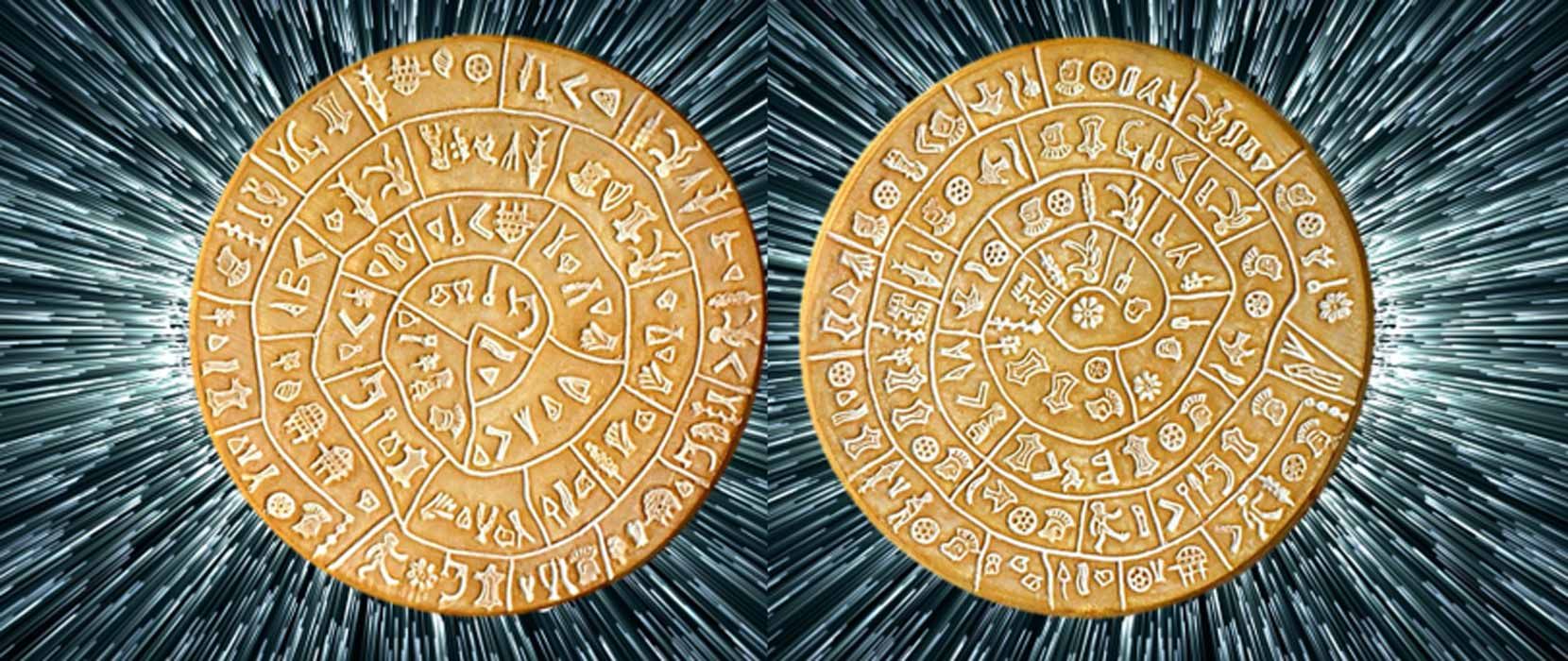In 1908 in Greece, on the island of Crete, excavations were conducted in the ancient city of Festus, one of the centers of Minoan civilization. The young and then unknown researcher Luigi Pernier was excavating one of the buildings of the palace complex, when in the floor of the temple vault found a cache disguised by a layer of plaster. Inside was a small disk made of terracotta. On it were carved unseen before the young archaeologist symbols. Soon after the discovery, the entire scientific community was interested in the disk, but neither Luigi himself nor experts on the Mionic civilization could not understand what it is. And for over 100 years archaeologists have been trying to unravel the mystery of this enigmatic artifact.
Luigi Pernier was part of an Italian expedition led by the already famous Federico Halberr. Their main goal was to study in detail the palace complex, which was destroyed by a strong earthquake caused by a volcanic eruption on the nearby island of Santorin in the second millennium BC. After the excavations Luigi Pernier published an article in the journal Rendiconti della Reale Accademia dei Lincei, where he described the work done on the island of Crete and the history of the discovery of the mysterious artifact along with his thoughts on it. The article immediately became sensational. The disk aroused great interest not only in the scientific community, but also among the public.
Luigi also gave a description of the Festa disk. It was a terracotta disk about 16 centimeters in diameter, and its thickness varied from 16 to 21 mm in different places, indicating that it was handmade without the use of a potter's wheel. Many different symbols are spirally inscribed on both sides of the disk. They are divided by lines into groups of 2-7 symbols. This is probably how the words that these symbols denoted were divided. These impressions are made by the method of extruding wooden seals on the still soft, not hardened clay (the product was not subjected to firing). It has been dated between 1800 and 1600 BC, making it the oldest printed text ever found.

A year later, in 1909, Pernier published a second article in the journal Ausonia. During this time, he better studied the artifact, and expressed his assumptions about its origin, what the symbols might mean, etc. He also redrew some of the signs and, importantly, attached photos of the disk from both sides to the article. Now the whole world has seen what the discovery made by the Crete expedition really looked like. This article became even more popular and caused even more furor, and the disc was interested in prominent archaeologists from around the world, including the main expert and discoverer of the Minoan civilization Arthur Evans. He devoted a whole section in one of his works to this ancient civilization. And the first of our compatriots who conducted a serious study of the artifact was philologist, papyrologist and Etruscanologist Albert Beckstrem.
Despite dozens of studies, none of the experts could not determine what the disk is, nor what is written on it. The symbols on the artifact do not resemble any Minoan writing. In fact, nothing remotely similar has ever been found on Crete before. The longer scientists have been studying the issue of the Phaistos disk, the more questions have arisen. There is no convincing evidence that it is even of Cretan origin, perhaps the disk was brought from outside. In the states with which Phaistos had any relations nothing of the kind has been recorded either. Arthur Evans believed that the disk could have come from southwestern Anatolia. He suggested that the artifact could be related to the people of the Philistines and could be a kind of symbol of peaceful relations between them and Festus. But this theory was not confirmed either.
Moreover, the opinions of researchers are divided on what written system to attribute the Phaistos disk: logographic, in which the sign can mean a whole word or expression, sillabic, where the sign denotes a single syllable or to the usual for us alphabetic. Artifacts with similar spiral inscriptions have been found before. However, they were not related to the Phaistos disk and did not help in its study.
The basic theory is that it could be a calendar. The number of fields in which the characters on both sides are written is 30 and 31, like days in a month. There are 123 characters on one side and 119 on the other. If you count the number of characters in a double flip of the disk turns out 365, as the days in a normal year. Especially inquisitive minds saw here even the lunar calendar. According to the second most popular theory, the Phaistos disk can be an astrological tool for observations and calculations. And the simplest explanation is that it's a ritual object. Something like a sacrificial disk or a common prayer book. There is even a hypothesis that it is a board game, in which you need to move the chip on a certain number of moves and so reach the center of the spiral.
As a result, for the last 116 years researchers have not come closer to unraveling the mystery of the Festa disk. Specialists say that for deciphering the symbols need more examples and until other artifacts with similar symbols will not be found deciphering the text (if it is a text at all) will not move forward. Perhaps in the future archaeologists will still be able to decipher these signs and we will finally get the answer to this mystery.


















